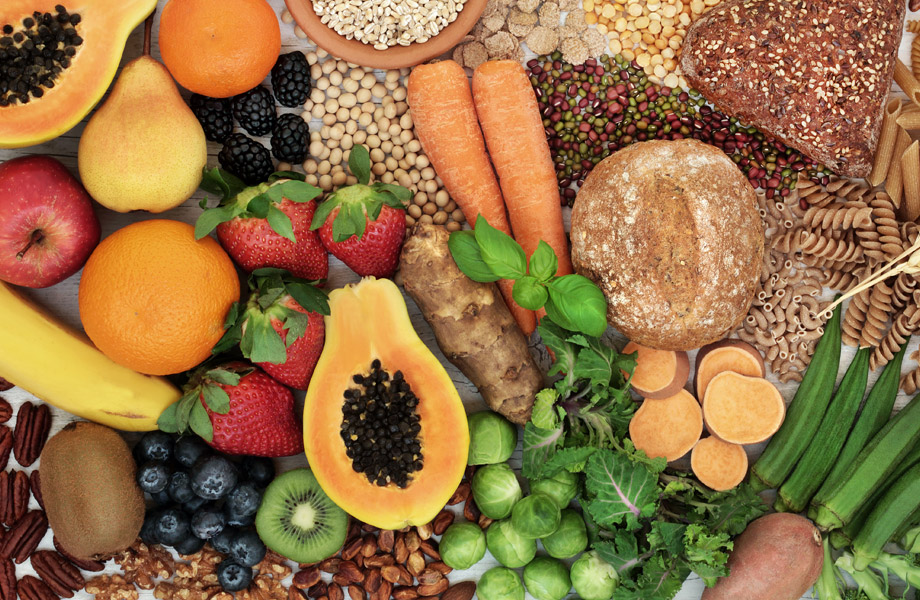An Easy Guide to Carbs
There’s a good chance you’ve wondered about carbs at one point or another. With many conflicting sources of information out there, it’s easy to feel overwhelmed, confused, and ultimately afraid when it comes to carbs! But don’t worry – we’ve made a simple guide for you.
Carbohydrates have long been a staple in the human diet. In fact, carbs are one of three macronutrients – along with proteins and healthy fats – that make up the bulk of your diet and help give your body energy!
But today, many people believe that all carbs are bad. Oftentimes, this is because they appear in many processed or unhealthy foods that are void of nutrition and are sometimes linked to chronic illness and disease. However, not all carbs are created equally. Carbohydrates are made up of three categories: sugar, starch, and fiber. It’s important to understand the differences between these three types of carbohydrates to make the best choices for you and your family. Here is a short-and-simple explanation:
Simple Carbs (Sugar): These fast-acting carbs are either naturally occurring sugars (e.g. in milk and fruit) or added sugars (e.g. in cookies, ice cream, and soda). Naturally occurring sugars can provide a boost of quick energy and are a healthy sweet alternative to processed foods with added sugar, like cookies and cakes. Plus, fruits are packed with many other nutrients! We find added sugar in many of our processed and packaged foods. They lack nutritional value, which is why we often hear them referred to as “empty calories.” Added sugars go by many different names on the nutrition label: table sugar, brown sugar, molasses, honey, powdered sugar and high-fructose corn syrup, to name a few.
You don’t have to completely avoid added sugar, but do pay attention to your nutrition labels and be aware of the types and amounts of sugars in the foods you’re eating.
Complex Carbs (Starch): Complex carbs include starchy vegetables (e.g. peas, corn, lima beans and potatoes), lentils and peas (e.g. pinto beans, black eyed peas, etc.), and grains (e.g. oats, rice, etc.). The grains can be broken down into whole grains and refined grains. Aim to fill your plate with whole-grain options, which offer great nutritional value. Whole grains include whole-wheat flour, oatmeal, and brown rice. Along with fruits, starchy veggies, lentils, and peas, whole grains are high in fiber, and a single serving can have as many as seven grams! This is more than you will find in a single serving of fruits or vegetables. Refined grains (e.g. white breads, bagels, and pastas) contain only part of the grain, so you miss out on important nutrients. While many refined grains are enriched with additional nutrients, fiber is not added back in.
Like proteins and healthy fats, complex carbs are beneficial for your body in the right portions. You can top your complex carbs with a beautiful tomato sauce, fresh veggies, fish, chicken, or cheese for a satisfying and filling meal! You can find many healthy recipes on our website that include healthy complex carbs.
Fiber: Found exclusively in plant foods, fiber is the indigestible part of fruits, veggies, whole grains, nuts, and legumes. On a nutrition label, you can actually subtract the fiber content from the total carbohydrate number, since you don’t digest it. Fiber supports healthy digestion and helps you feel full. Most of us don’t get enough fiber in our diets – another reason to add more whole grains, fruits, beans, legumes, and veggies to your plate!
Final Takeaways: Enjoy carbs in your diet with a healthy mix of whole grains, fruits, veggies, and legumes. You don’t have to hide from pasta, rice, and bread your whole life. Just be smart in the way you consume them, and make healthful swaps – whole-grain pasta instead of white pasta, a bowl of fruit instead of a bowl of candy – when you can!
By: Gary Appelsies MS, CHHC, AADP
Director of Healthy Eating
